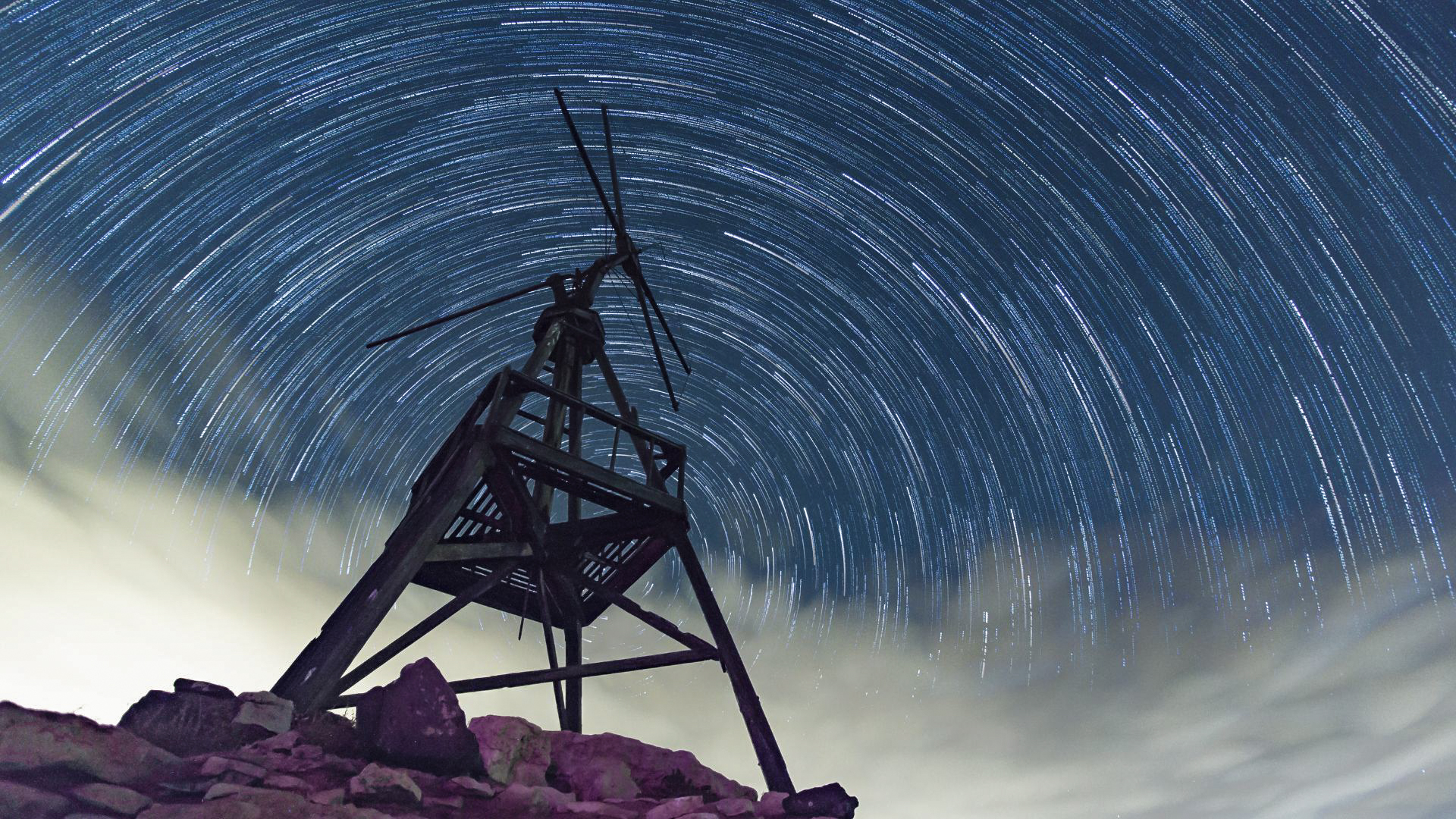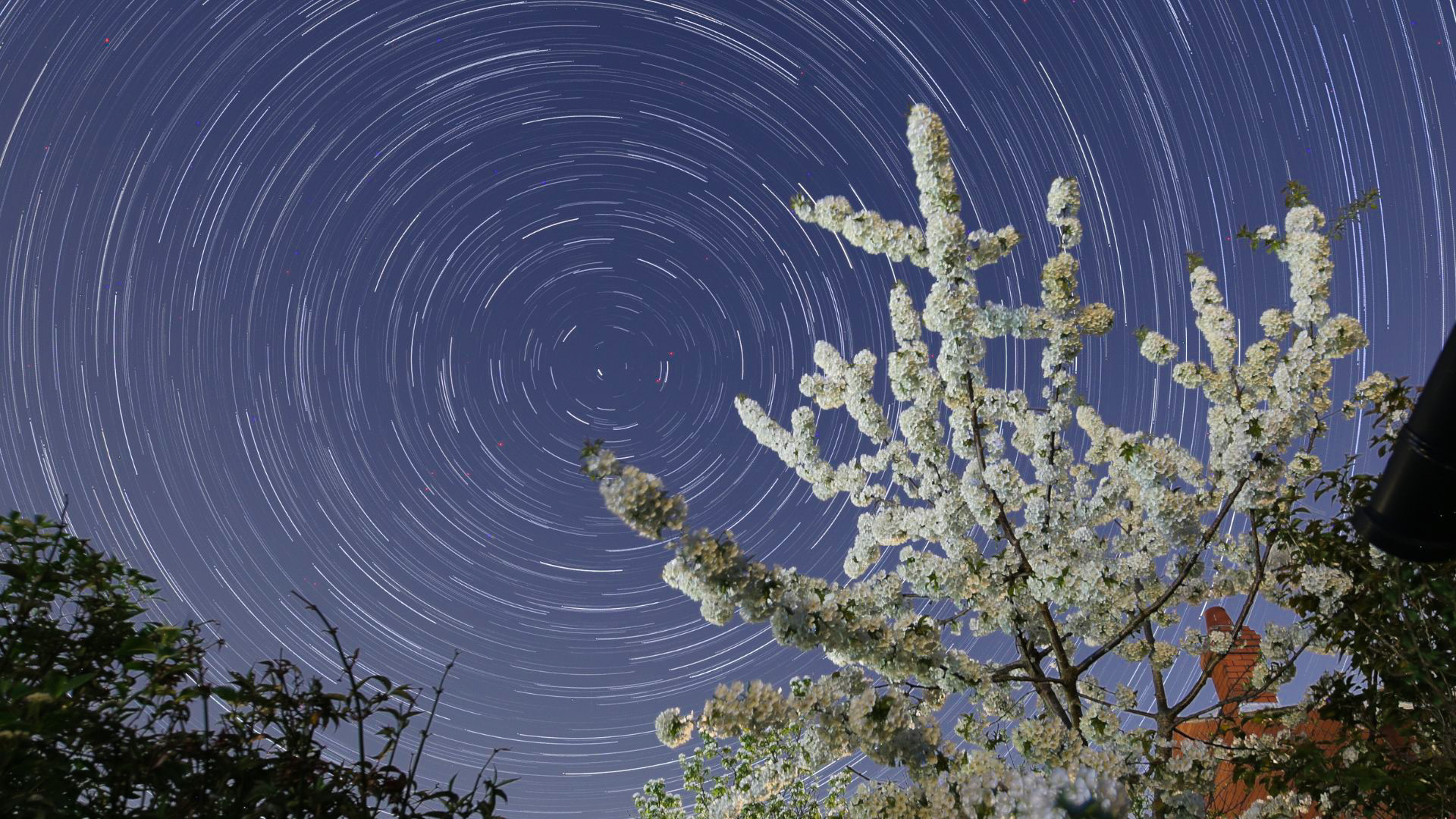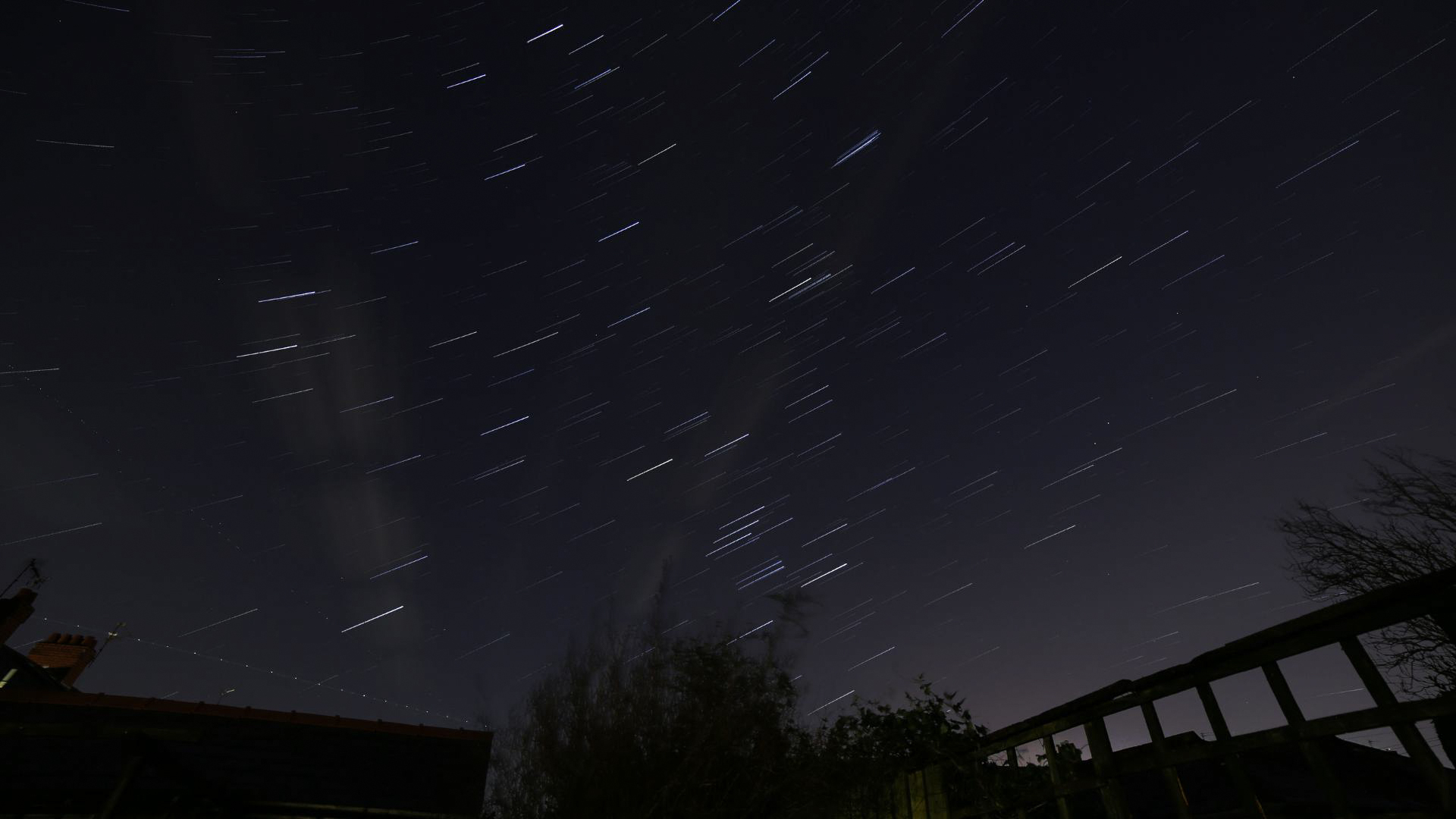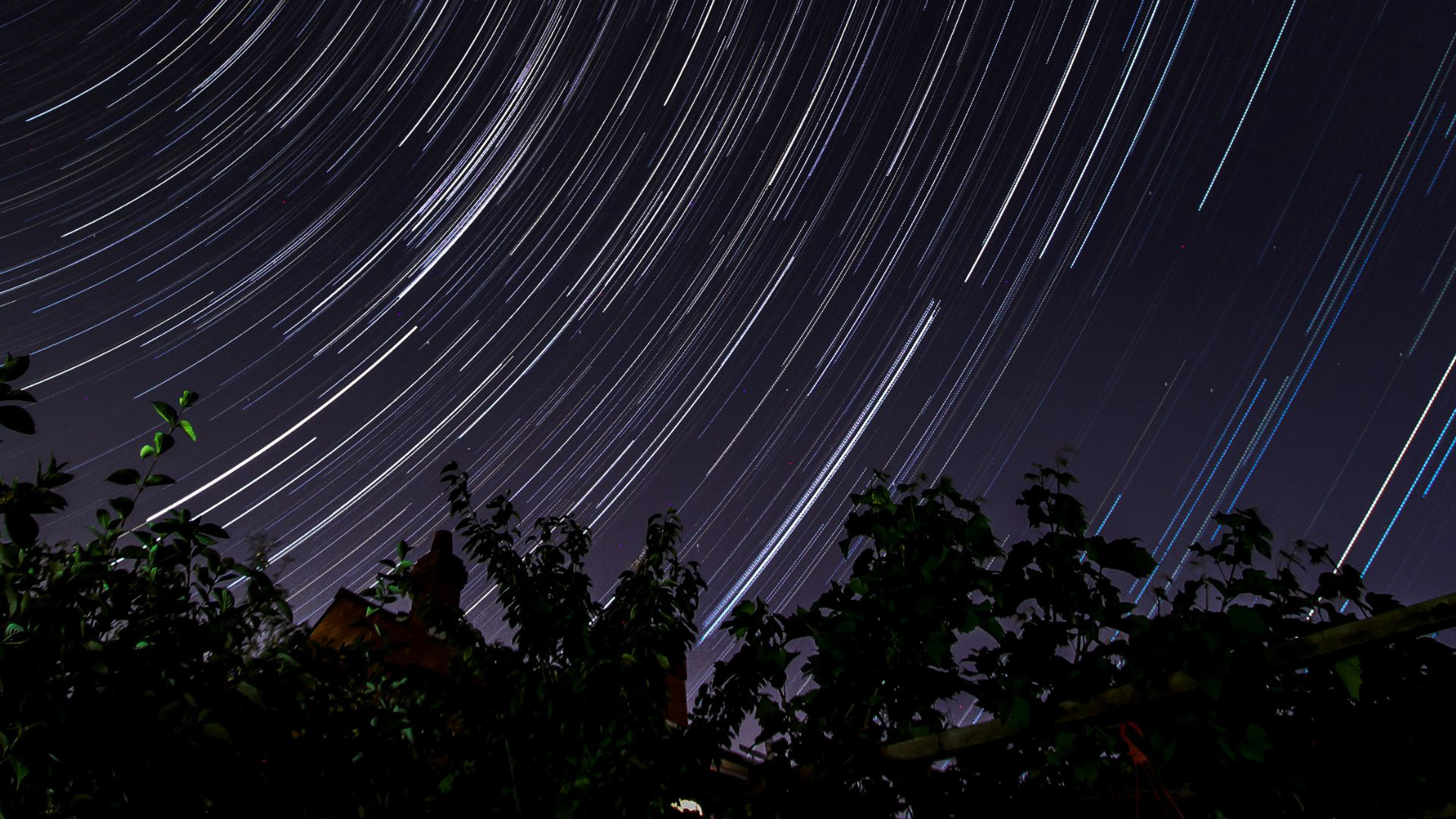7 ways of photographing a star trail at home
Mesmerizing images of the night sky can be taken in your backyard with basic equipment, but there’s more than one way of showing the Earth’s rotation

It's one of the most visually arresting images in all of astrophotography and it’s one that can be created quite easily in your backyard – whatever your level of light pollution – but the star trail has been a challenging shot until recently. However, advances in cameras, sensors and software has made it not only a relatively easy shot, but one that you can take using a whole host of different devices and approaches.
The classic star trail photo is of circles in the sky that show the movement of stars in the night sky and, consequently, the rotation of our planet. It’s usually achieved by pointing the camera toward either the south pole or the north pole, but there are a lot of choices to make before you start shooting.
Here are seven different ways to shoot a star trail:
1: The easy way

The most modern way of shooting a star trail is to take a series of short exposures with little or no gap between them, then stack them to create a composite image. The finished image is the same, but with two important advantages; it’s clean and you can avoid individual frames that show planes, lights or a passing cloud.
The fundamental technique involves creating a captivating nightscape image using a manual camera on a tripod using a wide-angle lens on f2.8 (or similar), a shutter speed of 30 seconds and around IS0 800, and experimenting until you have a great-looking single image. You then simply repeat the image hundreds of times using an intervalometer or a shutter release cable that can be locked in place (if the latter then use a short shutter delay of a few seconds to allow the camera’s sensor to cool down between each shot).
You then simply drag and drop all of your images into the free StarStaX software, which will build a star trail image and output it as a JPEG. It’s also got a handy ‘gap-filling’ mode that uses AI to compensate for any frames you’ve taken out.
• How to shoot star trails by taking and blending images of the night sky
2: The old-fashioned way
The classic way to shoot a star trail requires careful planning, patience and precise timing. The essential technique is to open the shutter on a camera for a long period. To do this you need a camera on a tripod sporting a wide-angle lens with manual controls and a bulb mode. To calculate the settings punch the settings you used above – in this example f/2.8, 30 seconds and IS0 800 – into the exposure calculator in the handy PhotoPills app, which can be used to work out the exact equivalent settings for a smaller aperture and lower ISO (in this example it prescribes f/14, ISO 800 and 1 hour 41 minutes).
Although the resulting image is often so noisy that it’s hard to justify over the new method unless shooting with film. But it’s instructive – and a halfway house should be considered. For example, a much longer exposure than 30 seconds will properly expose for an interesting foreground subject – something that will make your star trail standout. PhotoPills is also handy for calculating that, first using test settings on a very high ISO to take a test shot before dialing down the ISO to see what the equivalent aperture and exposure time is (we’re talking about an exposure of roughly five to 10 minutes).
3: Shoot for an hour

Go stand outside for more than 10 minutes and you'll notice that the position of the stars above you appear to move. Although stars are moving through space, that's not what you're saying here. Instead, what you're seeing is the rotation of Earth. Stars rise in the east, traverse the night sky to set in the west. A star trail photo is a way of seeing this sped up, just like a time-lapse, but to get a proper impression of the motion of stars requires at least an hour’s worth of motion. If you’re using a shutter speed of 30 seconds then that’s roughly 120 shots. Anything less and the impression is slight – we’re talking just a few elongated lines in place of each star – but 120 is a good place for beginners to start.
4: Leave a camera overnight
For a truly impressive star trail image, aim to leave your camera imaging the night sky for at least two hours. That’s about 240 shots. However, if you really want to create something spectacular that few other photographers ever get around to doing then pull an all-nighter. Of course, you don’t actually have to stay up all night – only your camera does – but if you can get several hundred shots over the course of five or six hours then the effect can be beautifully elongated trails and more vibrant stars. Just check the weather before you go to sleep!
5: Use an action camera

It’s even possible to shoot a star trail using an action camera. New to the GoPro Hero 11 Black and GoPro Hero 11 Black Mini – which have a 12mm f2.8 lens and reach ISO 1600 – is a Star Trails mode. It takes a series of long exposure photos that its software then automatically stacks, but rather than producing a photo it creates a short animated video. Since it’s weatherproof it’s possible to leave the camera in the backyard overnight (attached to a portable battery for extra power) to shoot an all-night star trail. The Insta360 One X2 360º camera can also shoot a widescreen Starlapse animation, though it’s more basic.
See more on using a GoPro for astrophotography
6: Use a smartphone
Better sensors and smarter noise controls make the latest smartphones (think: handsets from Apple, Samsung, Huawei and Google) capable of astrophotography, including star trails. For example, the Samsung Galaxy S23 Ultra has an astro mode within its Hyperlapse feature. Although it can also take a single image of the night sky over several minutes, this setting produces a short animation of the stars moving across the sky, either as single points of light or as elongated curves. Whatever smartphone you have you can try a star trail using the PhotoPills app, which has a built-in star trails mode. However, what you will need to do to any smartphone before attempting a star trail is to support it using a small tripod – any movement and your star trail is ruined.
7: Point away from the poles

Concentric circles are only possible if you orient your camera towards the north in the northern hemisphere and towards the south in the southern hemisphere. Compositionally, it makes sense to have that pole just above a foreground subject, such as a tree or building. However, if you think that shot is rather cliched (or if you’re shooting near the equator), then consider pointing your camera, either east south, or west. Instead of circles, you’ll get star paths rising from or sinking into the horizon, which can look just as dramatic. Also, consider shooting a star trail in portrait orientation, which few astrophotographers do but can look spectacular.
Read more:
• Astrophotography: How-to guides, tips and videos
• Astrophotography tools: the best camera, lenses and gear
• The best lenses for astrophotography
• The best star tracker camera mounts
• Best equatorial mounts
• Best deep-space telescopes
• The best light pollution filters
• The best CCD cameras for astrophotography
• The best spotting scopes
• The best binoculars
Get the Digital Camera World Newsletter
The best camera deals, reviews, product advice, and unmissable photography news, direct to your inbox!

Jamie has been writing about photography, astronomy, astro-tourism and astrophotography for over 15 years, producing content for Forbes, Space.com, Live Science, Techradar, T3, BBC Wildlife, Science Focus, Sky & Telescope, BBC Sky At Night, South China Morning Post, The Guardian, The Telegraph and Travel+Leisure.
As the editor for When Is The Next Eclipse, he has a wealth of experience, expertise and enthusiasm for astrophotography, from capturing the moon and meteor showers to solar and lunar eclipses.
He also brings a great deal of knowledge on action cameras, 360 cameras, AI cameras, camera backpacks, telescopes, gimbals, tripods and all manner of photography equipment.
